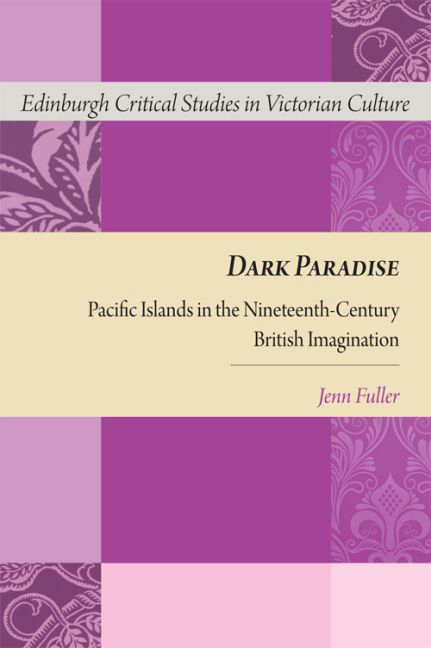Book contents
- Frontmatter
- Contents
- Series Editor's Preface
- Acknowledgements
- Introduction
- 1 Moving Missions and Novel Settlements: Early British Pacific Propaganda (1796–1866)
- 2 Adventures in the Pacific: The Influence of Trade on the South Seas Novel
- 3 Islands of Discovery: Scientific Curiosity in the Works of Darwin, Huxley and Wells
- 4 The Price of Paradise: Robert Louis Stevenson, Joseph Conrad and British Expansion in the Pacific
- 5 The Islanders Speak: Pacific Reflections in the British Press
- Bibliography
- Index
2 - Adventures in the Pacific: The Influence of Trade on the South Seas Novel
Published online by Cambridge University Press: 12 September 2017
- Frontmatter
- Contents
- Series Editor's Preface
- Acknowledgements
- Introduction
- 1 Moving Missions and Novel Settlements: Early British Pacific Propaganda (1796–1866)
- 2 Adventures in the Pacific: The Influence of Trade on the South Seas Novel
- 3 Islands of Discovery: Scientific Curiosity in the Works of Darwin, Huxley and Wells
- 4 The Price of Paradise: Robert Louis Stevenson, Joseph Conrad and British Expansion in the Pacific
- 5 The Islanders Speak: Pacific Reflections in the British Press
- Bibliography
- Index
Summary
Introduction
One of the earliest Pacific adventure stories, full of captures and escapes, cannibals and cutthroats, paradises and purgatories, was written not by an aspiring novelist but by the young missionary George Vason, who ‘went native’ after initially attempting to convert the islanders of Tonga. When he lands in Noogollefa, Vason is greeted by natives, but he is more interested in describing the two Europeans he meets, Benjamin Ambler and John Conelly, beachcombers who left an American ship to settle on the islands. Vason quickly notes that the two men
showed themselves to be base and wicked characters … it is most likely that they were transported for some misdemeanor, and gladly secreted themselves in this island, where they could indulge, without restraint, in those habits of idleness and profligacy, to which they had been addicted.
While Vason admits that the two men are useful in dealing with the island chiefs, he despises their sin and weakness:
The dress and carriage of the two Europeans were like [the islanders’]: they seemed to imitate them in every thing, and much to exceed them in wickedness. Thinking we were as bad as themselves, they swore with the fluency of abandoned seamen, and probably to give us an idea of the impure freedoms, in which they indulged without control, in Tongataboo, they treated the women with brutish indecorum and cruelty, and told us that one of them had three wives, and the other four. They were soon, however, awed into a more reserved behaviour, by our discountenance and reproof; and before long, became our bitterest enemies.
Vason's use of ‘our’ underscores his identification with his missionary brethren; he simultaneously identifies himself with the idea of the two wanton Europeans-turned-native. Having already admitted that he enjoyed swearing as a youth in his introduction, Vason is aware that the differences between himself and these two beachcombers are not as distinct as he perhaps would have liked to believe. Rather than pursuing his missionary endeavours, Vason leaves his fellow missionaries to live with the natives, changing the tone of his work. Instead of focusing on ‘civilising’ island people and bring them to Christ, the style popular in missionary fiction, Vason's narrative highlights instead his many experiences and adventures amongst the peoples of Tonga.
- Type
- Chapter
- Information
- Dark ParadisePacific Islands in the Nineteenth-Century British Imagination, pp. 50 - 84Publisher: Edinburgh University PressPrint publication year: 2016



